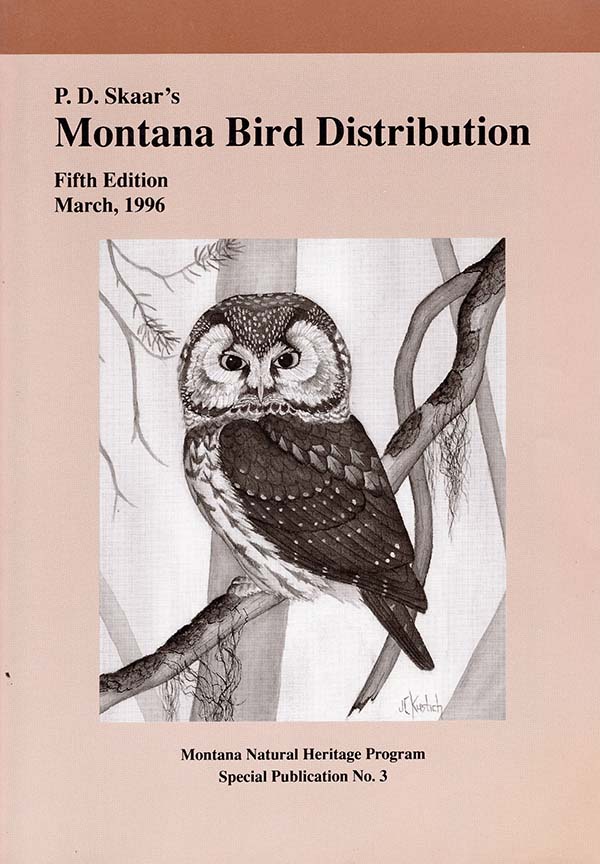1970 – 1999



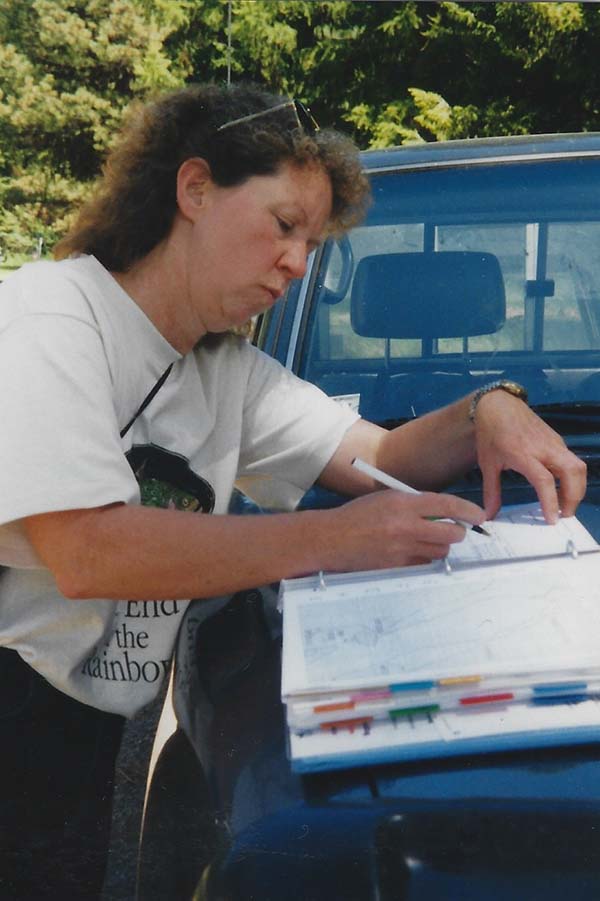



To support the floating nest signs, the Montana Loon Society developed public educational programs given often as campground talks at high use areas.
In 1996, the first loon bandings occurred in Montana. For this banding, the Montana Loon Society funded Biodiversity Research Institute in Maine (www.briloon.org), which had the experience and necessary loon banding permits, to capture and band a few common loons in the state.
In 1996, this chick was captured on Pierce Lake. (Chicks this young are not banded, but the chick was still examined and blood drawn.)


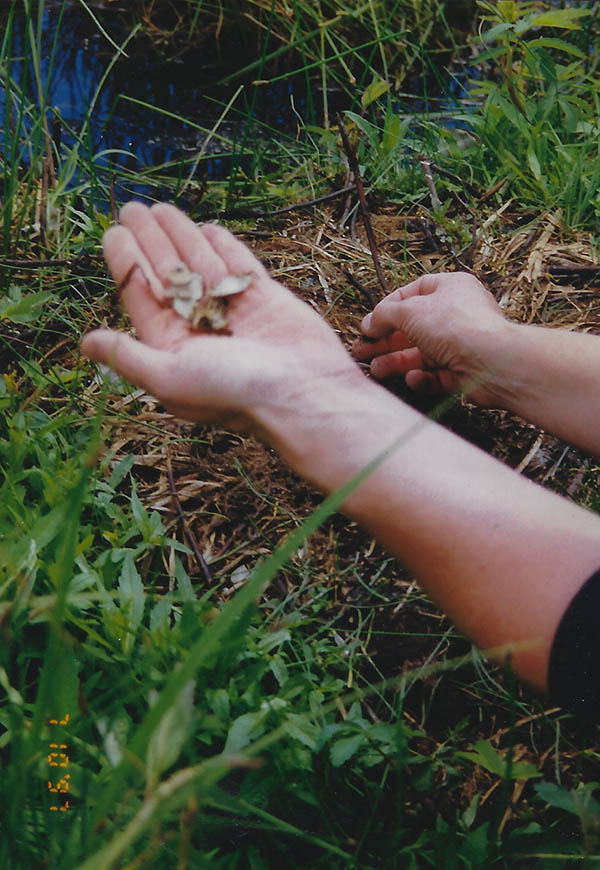
Eggshells were gathered from as many nests as possible. Montana’s loons overall had low levels. Testing continues when necessary.
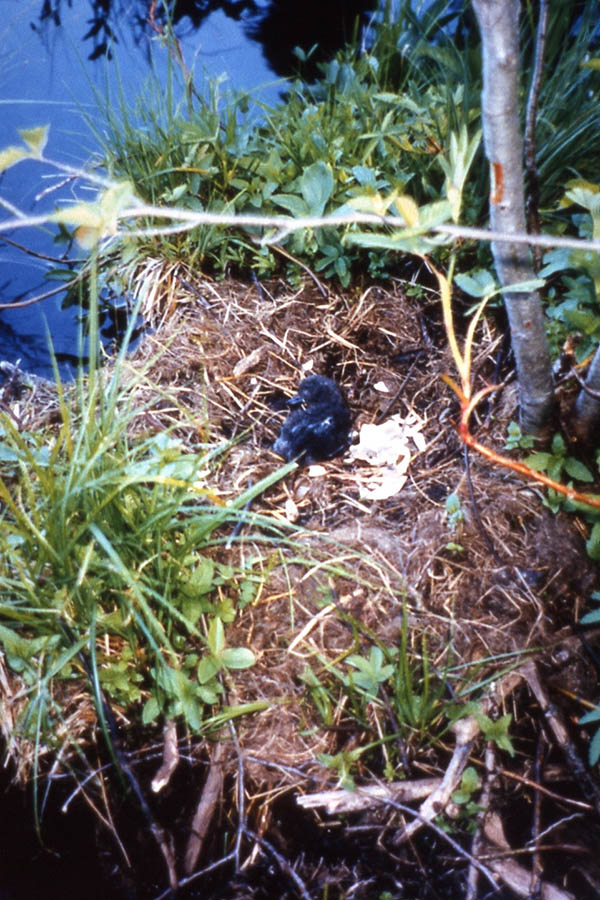

The recovered chick was taken to a taxidermist and is now part of an educational display at the Seeley Lake Forest Service Ranger Station. The display had previously held an adult loon that was also found dead on Alva Lake ten years earlier. A loon egg found on Seeley Lake in 1998 was also in the display (placed on the other side of the adult loon), which was found off the nest and resting in the water. Together, the adult loon, chick, and egg create an excellent opportunity to educate the public about the needs of loons.
In 1999, the Common Loon Working Group (CLWG) formed to address the needs of loons in the state. Since then, the CLWG has collected and managed loon data. The Montana Loon Society continues to provide volunteers and other support.

2000 – 2009
In 2000, the Montana Loon Society received 501 (C)3 non-profit status.

Also in 2000, the Common Loon Working Group and the Montana Loon Society secured funding to implement a pilot Loon Ranger Program through MT FWP’s internship program. The first intern position was hosted in Seeley Lake, Montana, and included lakes in the Clearwater and Blackfoot river drainages. The first Loon Ranger was Tim Dykstra, a University of Montana student.
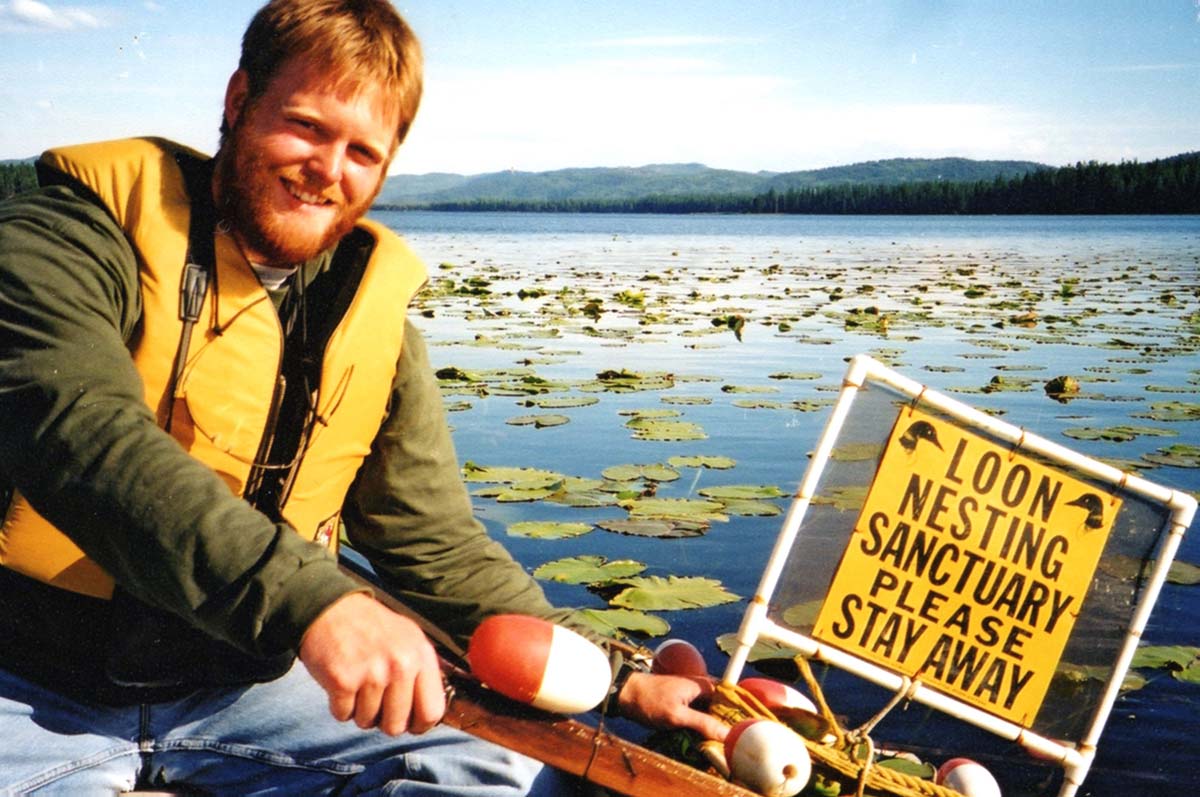

In 1992, the community of Seeley Lake had already developed the Seeley Lake Loon and Fish Festival, which was held on Saturday and Sunday of each Memorial Weekend. This was, in part, the reason Seeley Lake was chosen to host the pilot loon ranger program. Another factor was the availability of housing on the Seeley Lake Forest Service Ranger Station for the loon ranger.
For the festival, Alpine Artisans of the Seeley-Swan Valley held an art contest to design the festival t-shirt and brochure.



The walls of the festival venue were decorated with art provided by area schools.
Click here to view more Loon Arts and Craft ideas.
In 2003, the Montana Loon Society developed its first website.

In 2005, the Montana Loon Society created and placed four Educational Loon Trunks around the state. These trunks are available for teachers and homeschoolers to use.

Between 2001 and 2009, loon banding continued.


Thanks to the many observers on the Pacific Coast, band results began to arrive. From them, we now know that our birds spend the winter off the Pacific seacoast from Northern Washington to Central California.
In 2005, a Montana loon made its historic flight from Morro Bay, CA to Lower Stillwater Lake, MT, traveling over 1000 miles between 3 – 5 days. The purple line shows the approximate migration route of the Lower Stillwater Lake loon. On the lower left, the Lower Stillwater loon is pictured swimming in Morro Bay.
2010 – 2019
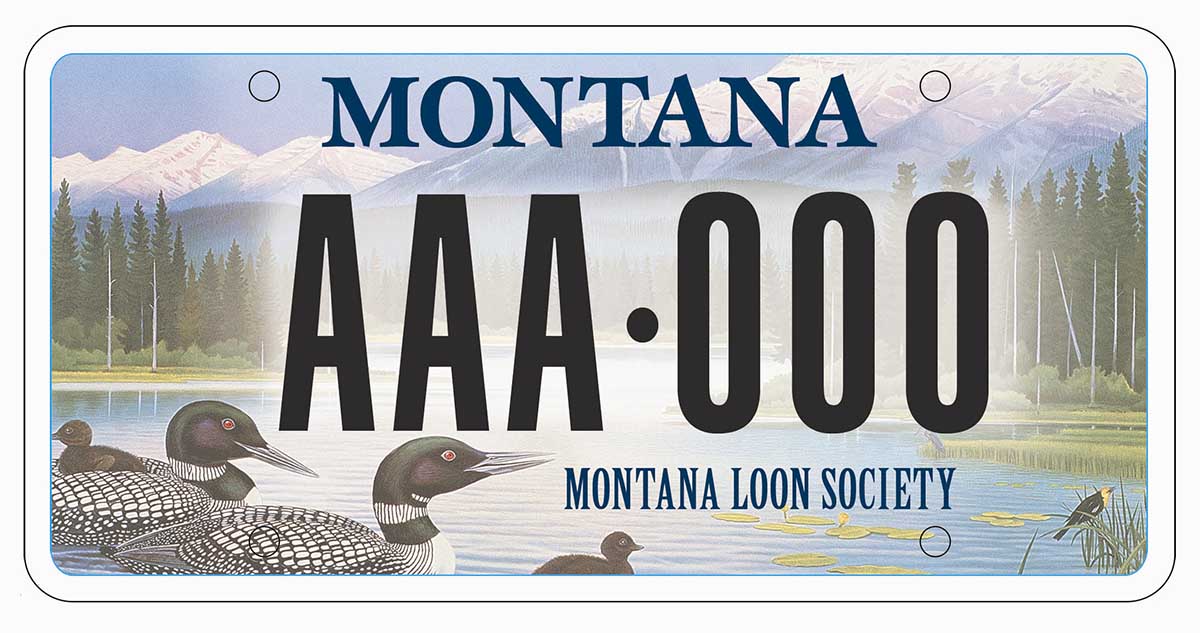
To obtain the MLS license plate visit your local county courthouse. The DMV requires that 400 plates remain on vehicles each year. “Forever” plates, as well as plates on any trailer including utility, horse, and/or recreational vehicles count towards the 400, so be sure to consider purchasing this plate for all your vehicles.
Soon, our loon booth advanced to include information about our plate, as well as information on non-lead sinkers, AIS, and biodegradable fishing line. Merchandise sales help fund Society activities and events.



LOON BAND CONTEST
Click here to view our printable Loon Band Contest Rules.

Two $100 awards will be decided by a random drawing from all individuals who submitted at least one observation. To encourage early observations, one drawing will occur in mid-June and the other in mid-July. Send band observations to Jami Belt of Glacier National Park, glac_citizen_science@nps.gov (406.888.7986)

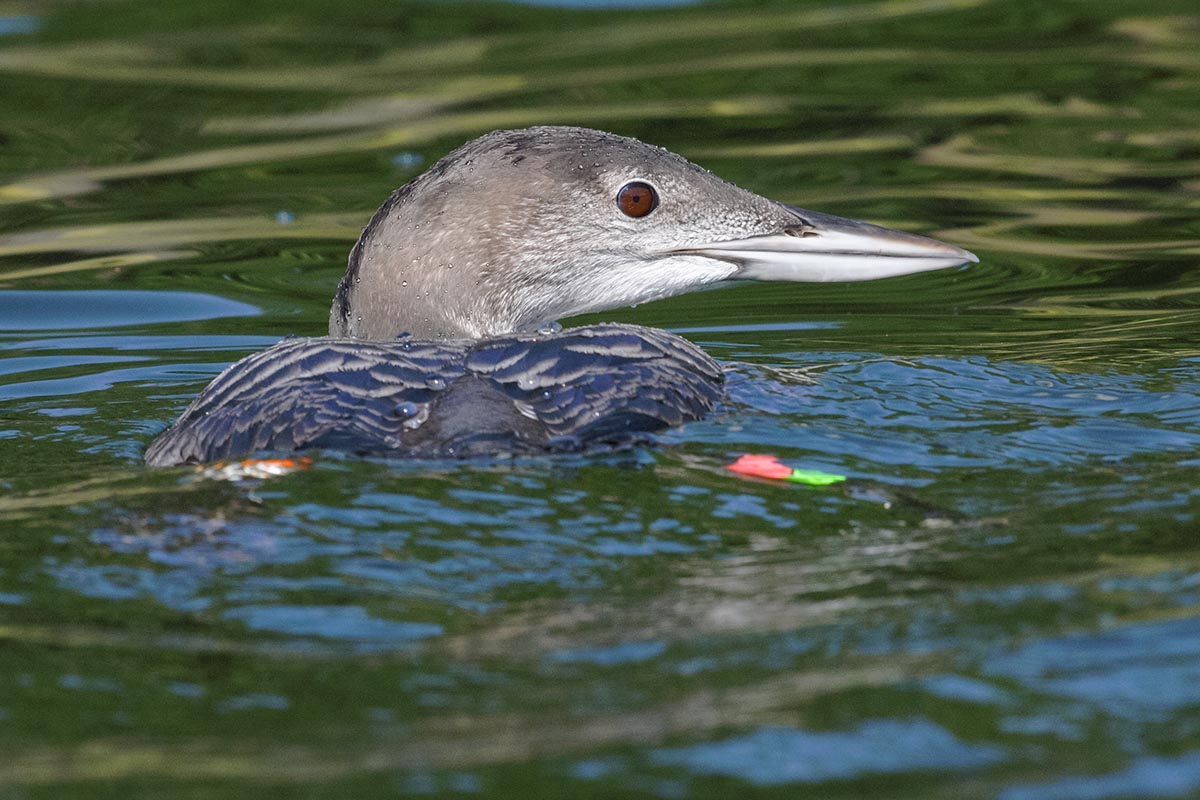

In July 2014, a loon banded in Montana as a chick on Upper Thompson Lake in 2006 was found dead on Bonner Lake in Idaho. Chris Hammond of MT FWP confirmed that a lead weight was in its gizzard, but stated that it could not be determined with absolute certainty that the bird died of lead poisoning. Michelle Kneeland, a DVM with Biodiversity Research Institute in Maine performed the necropsy and felt she could say with 99.99% confidence that the loon died of lead poisoning. Whether or not this bird died of lead poisoning, please support “Get the Lead Out” and use non-lead sinkers and weights.
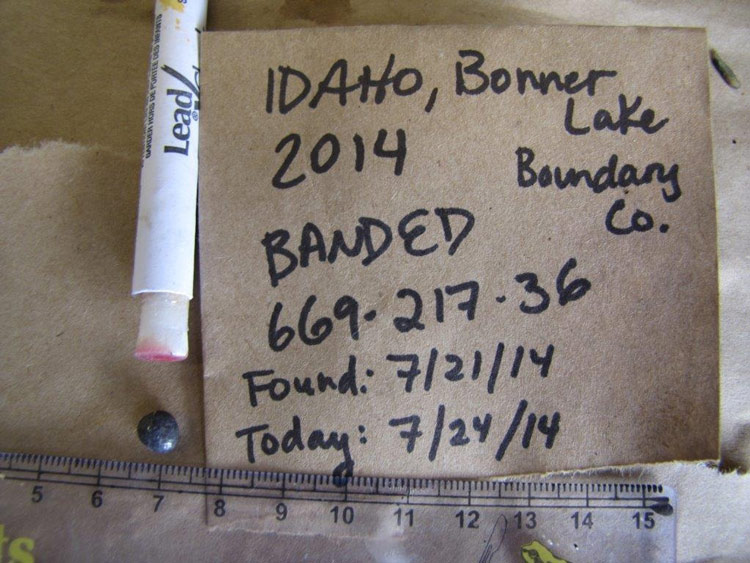





In 2018, a spring territorial battle between two male loons was filmed by Common Loon Working Group members, Gael Bissell and Chris Hammond. Loons can live to be 20 years old. A male loon between the ages of six and twelve are in their prime. A young loon that has reached its prime sometimes battles with other males for a territory. These battles can be intense and can end in the death of a loon, but that is a rare occurrence.

In 2019, our first ever “Pint Night” was held in Eureka at Homestead Brewery to raise awareness of loons. To host a loon “Pint Night” near you, contact the Montana Loon Society.
2020-2029
In 2021, a loon pair in the Crystal Lakes area near Eureka, Montana hatched and raised three Canada geese goslings. It is thought that the loons chased a goose off their artificial nest platform and took over incubating her eggs. Two of the goslings survived the summer.
NEW LOON BOOK
In 2023, author, Donna Love, and photographer and Crystal Lake resident, Bob LeBlanc, published the story of the loon pair that hatched three Canada geese goslings in the summer of 2021.

A Montana Loon Summer Surprise
By Donna Love
Photographs by Bob LeBlanc-35 Pages with 30 Full-page color photographs
A Canada goose laid three eggs on a tiny island.
A loon pair chased her away.
What happened to the eggs?
$12.00
Order in May 2023 from Amazon
(Book not available from the Montana Loon Society site.)
50% of the proceeds of this book will go to the Montana Loon Society.
Throughout the years, the Montana Loon Society has produced a yearly newsletter to provided updates on Montana’s loons and news events and activities. To receive our newsletter through the mail or via email, contact the Montana Loon Society.


Common Loon Images Provided by:
@Daniel Poleschook, Jr. and Virginia R. Poleschook
www.loonconservation.org
509.939.2748
daniel.poleschook@gmail.com


